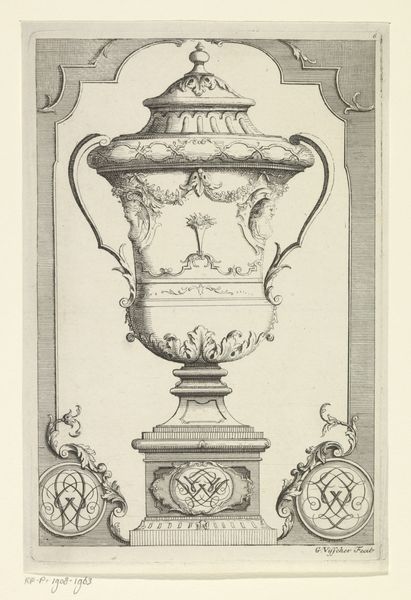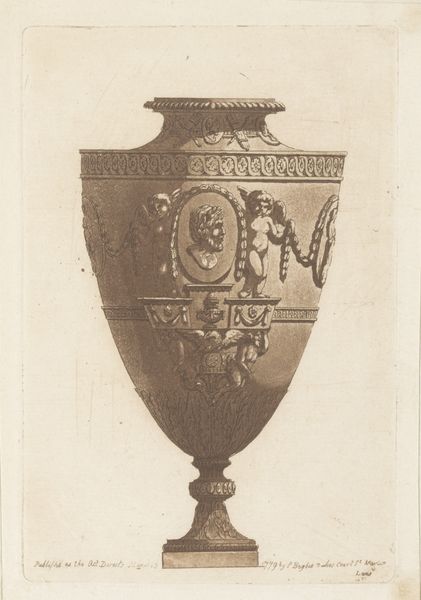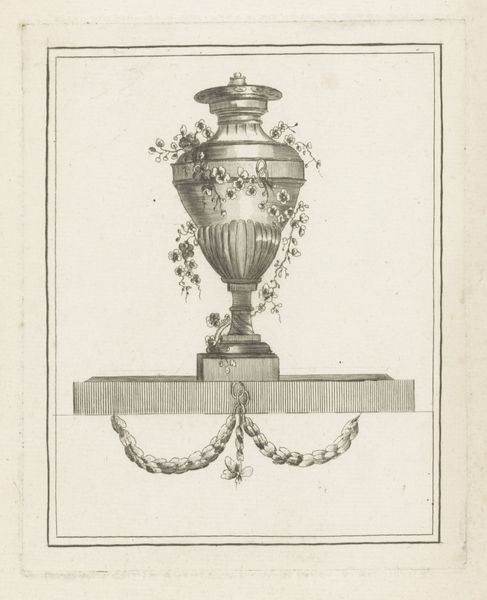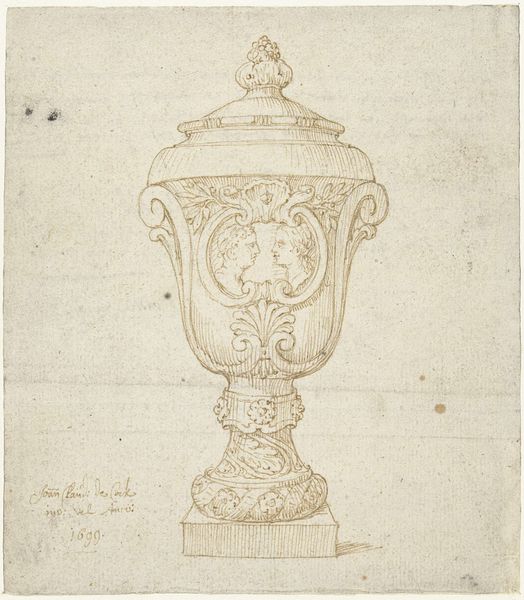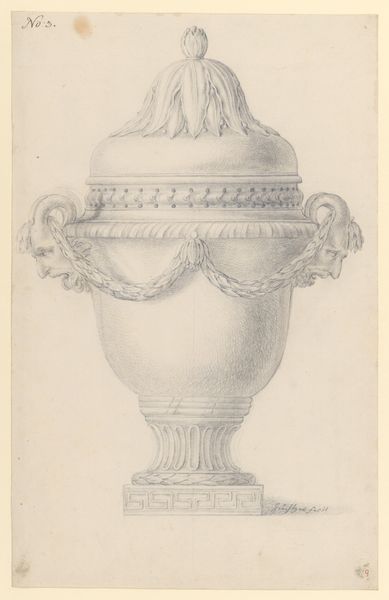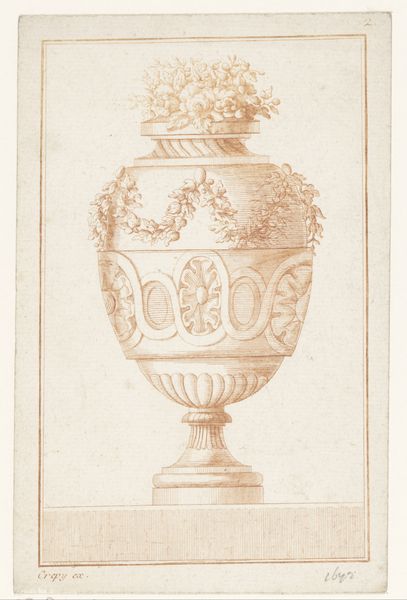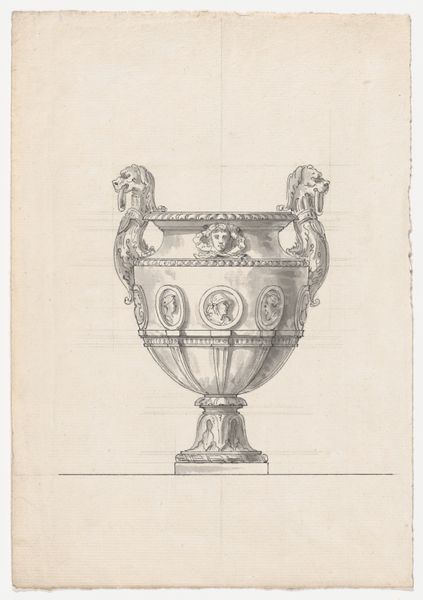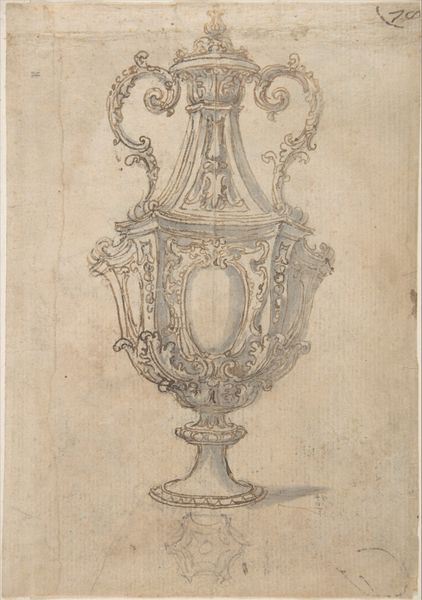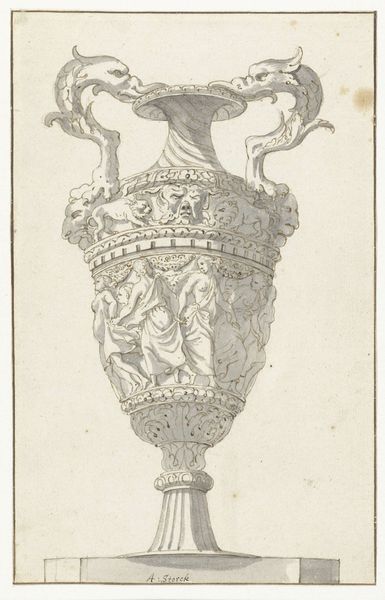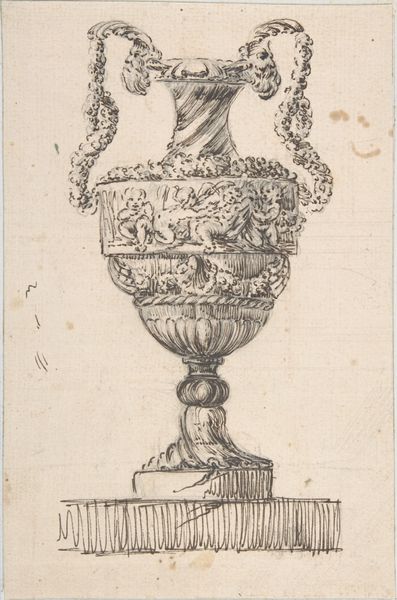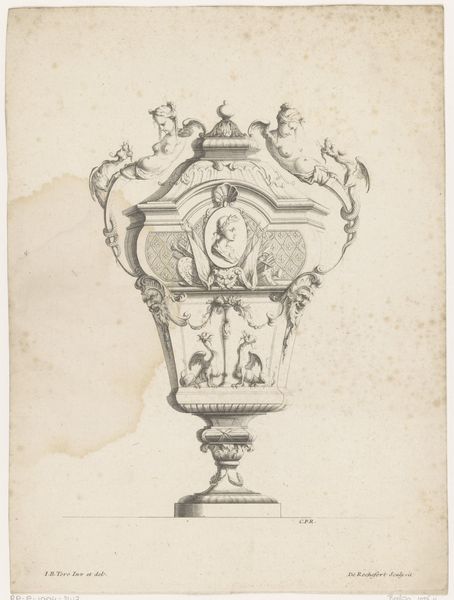
drawing, ink, pen
#
drawing
#
allegory
#
baroque
#
form
#
ink
#
coloured pencil
#
pen
Dimensions: 9 7/16 x 6 15/16 in. (23.9 x 17.6 cm)
Copyright: Public Domain
Editor: So, this is "Design for an Amphora," a 17th-century drawing in pen and ink by an anonymous artist. I find it quite intriguing; it has a dreamy, almost surreal quality to the figures and ornamentation. What's your take? How would you interpret it? Curator: Considering its Baroque style, the "Design for an Amphora" demonstrates the period's fascination with ornate decoration and its deployment in the service of authority. Who do you imagine used these objects, and what spaces did they occupy? Editor: I imagine these were owned by nobility for decorative display within their home, perhaps meant to reinforce social standing. It is unlikely they were ever used to carry items. Curator: Precisely. This is more than just a vessel; it’s a symbol. Think about the political and social function of the Baroque era—a time of absolutist monarchs and a powerful church. Objects like this were designed to impress. Notice the hybrid mythological creatures. Do you know where they are derived from? Editor: From classical imagery, like Greek or Roman art? Curator: Yes, exactly! By referencing antiquity, they are trying to connect to the legacy of power and prestige associated with those empires, lending legitimacy to the contemporary regime and elite circles. What do you observe about its material execution? Editor: I am drawn to its fine lines. The detailing in pen and ink would take such precision and care, adding to the luxury appeal of such object if created in physical form. Curator: Absolutely. The value lies not just in the material it *could* be made from, but also in the skill and artistry required to design and, subsequently, realize such a complex piece. The imagery conveyed notions of power. Looking at it through the lens of art history really highlights its purpose beyond pure aesthetics, don’t you think? Editor: It definitely does. I never thought about it as a form of visual propaganda, almost! I’ve definitely learned to consider the "why" behind the what today.
Comments
No comments
Be the first to comment and join the conversation on the ultimate creative platform.

